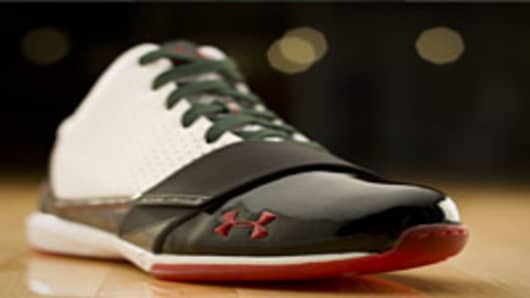As expected, getting into the shoe business hasn’t been the easiest for Under Armour .
They quickly took significant market share in the first year in football and baseball cleats, but decided to slow down their move into the category after investing heavily in the training and running shoe markets and not making as much noise.
On Oct. 30, the $1 billion apparel company will unveil four different versions of its Micro G basketball shoes, ranging from the Blur for $80 to Brandon Jennings’ signature shoe, Black Ice, for $110.
The chance to take market share is limited –- Nike , through its Nike, Jordan and Converse brands, owns an astounding 95 percent of the $2.4 billion U.S. basketball shoe market, according to Matt Powell, analyst for SportsOneSource, a sports market retail tracking firm.
If UA doesn’t grab at least 1.5 percent by the end of 2011, I’m calling this a failure. If they take 2.5 percent, I think they have a future. If Under Armour can grab four percent of the market place in year one, I’ll define it as an incredible success.




